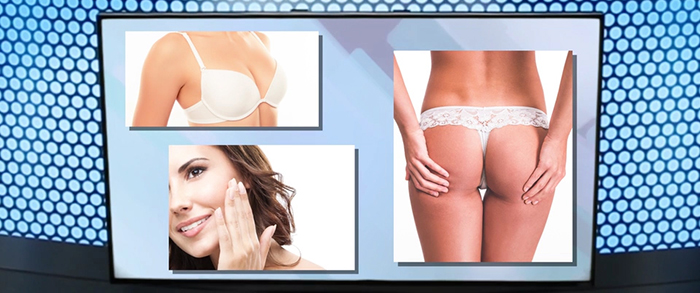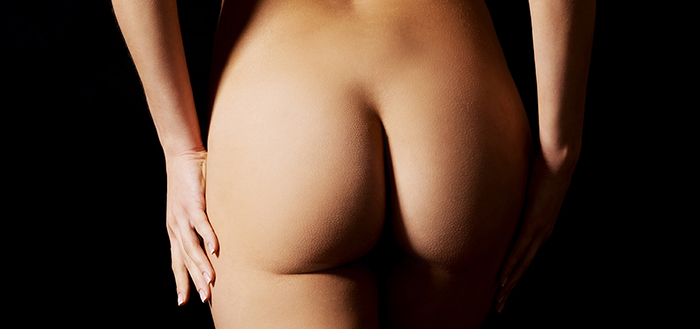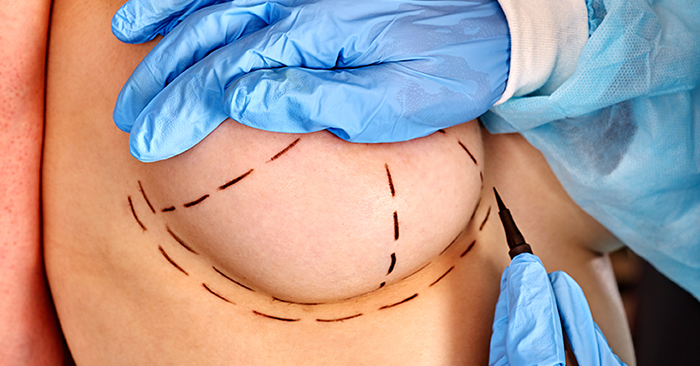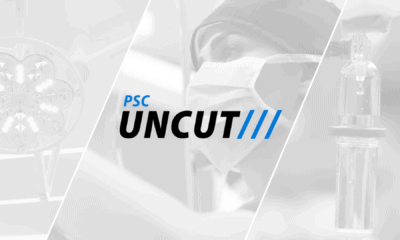Autologous fat transfer (AFT), commonly know as fat grafting, has been called Mother Nature’s favorite filler. Fat transfer counteracts volume loss due to aging by replacing it with a patient’s own tissue. It can also introduce volume in places where more fat is desired, such as breast and buttock augmentation procedures.
Dr. Brian Brzowski of Ogden, Utah spoke with fellow surgeons, Dr. Daniel Y. Maman of New York City and Dr. Dustin Reid of Austin regarding fat grafting and where it fits into plastic surgery today. “Fat grafting is all the rage,” observes Brzowski. “We know fat is a popular tool, so how, when and where is it best used?”
What is Fat Grafting?
Fat grafting is using a patient’s own tissue by removing fat from one area – called the “donor site” – and putting it into another. Once the fat is harvested, it’s “cleaned” and deposited strategically via syringe into an area of augmentation. The fat itself can be taken from almost anywhere on the body. Unlike filler that is put in a space, fat transfer or fat grafting denotes that the body actually incorporates it. It becomes an active part of that area. For many surgeon, fat transfer is thought to be the only authentic way to re-volumize.
Fat transfer is a rapidly evolving field within plastic surgery worldwide and a specialized focus. While it is not a new technique – in fact, over 25 years old – it is highly technique-dependent. Recent advancements in extracting fat with refined methods of liposuction has helped the idea of fat transfer to become more mainstream.
Location, Location, Location
Using your own fat can provide a full look and soft feel to many areas of the body. “We’ve seen a massive uptick in requests for fat transfer over the last few years,” says Dr. Maman. Some popular areas are the face, breasts, and buttocks. Even lip and hand rejuvenation are increasingly becoming common uses of fat injections.
Dr. Reid finds he frequently consults patients on facial volume and buttock augmentation using fat transfer. Facial rejuvenation with fat can trump fillers providing a natural, more permanent volume solution. Beyond it’s permanency, fat can “round out” a facelift procedure, adding that last bit of nuance needed to complete a rejuvenation. A facelift lifts and repositions the facial muscles and skin, but only fat can restore volume, a major part of a youthful appearance.
For the buttock, the process is synergistic. Liposuction removes fat from unwanted areas, but expert surgeons do not wantonly lipo areas. The places where removal occurs is planned and executed so that contour can be enhanced. After performing the removal aspect of re-contouring, the removed fat can then be added to areas the bolster the new contour. In this “transfer” of fat from one place to another, skilled surgeons are able to not just add some volume to patient’s behind, but rather re-contour their waist and buttock to create an aesthetically beautiful results. Because of this increase in the procedure’s capabilities with fat grafting, buttock augmentation and contouring is growing exponentially.
When it comes to breast augmentation, a patient can choose fat grafting in place of an implant, but only if their desire is for a modest increase in size. More commonly, fat transfer to the breast is utilized as a fine-tuning tool, adding a bit here and there to smooth any slight irregularities. Surgeons specializing in breast enhancement consider the entire chest as one aesthetic unit and fat grafting can optimize the upper pole of the breast, improve the décolletage, and further sculpt the cleavage.
Fat is also an outstanding way to treat breast cancer victims. It adds volume, filling lumpectomy defects. It can soften the hard, palpable areas of scarring from radiation therapy. The enhanced contour, shape and volume offered through fat can camouflage implant palpability after a skin and nipple sparing mastectomy.
Predictability
Dr. Brzowski asks his panel about the predictability factor of fat. “One of the criticisms of fat is that there is such a variability in its survival rate. And how do you manage patient expectations?” Dr. Maman comments: “Fat predictability really depends upon several things:
- The harvest site
- Quality of the fat
- Age and health of the patient
- Location of the recipient bed.”
Dr. Reid finds that his results are quite predictable at 50-60% for buttock augmentation. “The buttock layers typically don’t have an excellent blood supply, so it is not as sure as in other areas. We plan accordingly based on our experience. With rare exceptions we can count on our results.”
Most surgeons agree that successful fat grafting is only possible when the right amount of fat is injected and enough time is dedicated to the procedure; it can be time-consuming and demanding. The best surgeons work steadfastly on preserving viability, precise application and a keen aesthetic sense. If done properly much survives – but never 100%.
Reid is careful to explain variation in survival. “Not all the fat will live. Particularly with buttock augmentation, the buttocks may be bigger in the beginning than what ends up. Most patients accept that if I help them anticipate that up front.”
Advantages and Disadvantages
Some of the advantages of facial fat transfer over fillers is long term costs. Fillers are, after all, not permanent. Over two to three years the cost of fillers will eclipse the cost of fat grafting, especially as facial aging advances. There is also a potential stem cell element at work in fat that provides cell repair, potentially aiding in skin quality improvement. This is an area of intensely active research and has yet to be determined with enough evidence for surgeons to guarantee.
The disadvantages have a bit more to do with the surgeon versus fat itself. While there is no opportunity for a patient to reject their own fat, lumps can happen if enough care is not used in the application. Dr. Reid cautions there is a potential fat can be overdone. “The giant butt augmentations, courtesy of the ‘Kardashian effect’ is a bit out of control. Some people really want that…but with time it could be problematic…almost too much of a good thing.”
While the statistics increase across the country, Dr. Brzowski comments that the FDA is currently looking at fat recommendations and guidelines, especially when the subject is breast augmentation. However it is important to understand that the FDA controls medications, substances ,and medical equipment – not a patient’s own body tissue. The controversy lies more in potential side effects of stem cells interacting with breast tissue and causing an elevated risk of breast cancer or detection of breast cancer. The concern over “causing” breast cancer has largely been diffused and considered more theoretical than proven.
As far as detection, the prevailing thought among most plastic surgeons is that good mammographers can distinguish real issues from false alarms. Cysts, nodules and changes in the breast can be the side effect of any breast intervention – augmentation with implants, breast lifts, breast reduction, and liposuction. If fat is injected into the subcutaneous space overlying the breast tissue itself, it is thought to be safe.
The Importance of a Specialist
Patients are learning there is nothing that comes close to the aesthetic benefits of fat grafting – it simultaneously rejuvenates and may even slow the aging process for a time. Not surprisingly, demand continues to rise. Many physicians have joined in the fat injection rage in order to broaden their patient base. A word of caution – not all have the training, experience, or skill required to successfully deliver consistent results. Consulting with a board certified plastic surgeon with experience should be the first step when considering fat transfer to any area of the body.










Facebook
Twitter
Instagram
YouTube
RSS